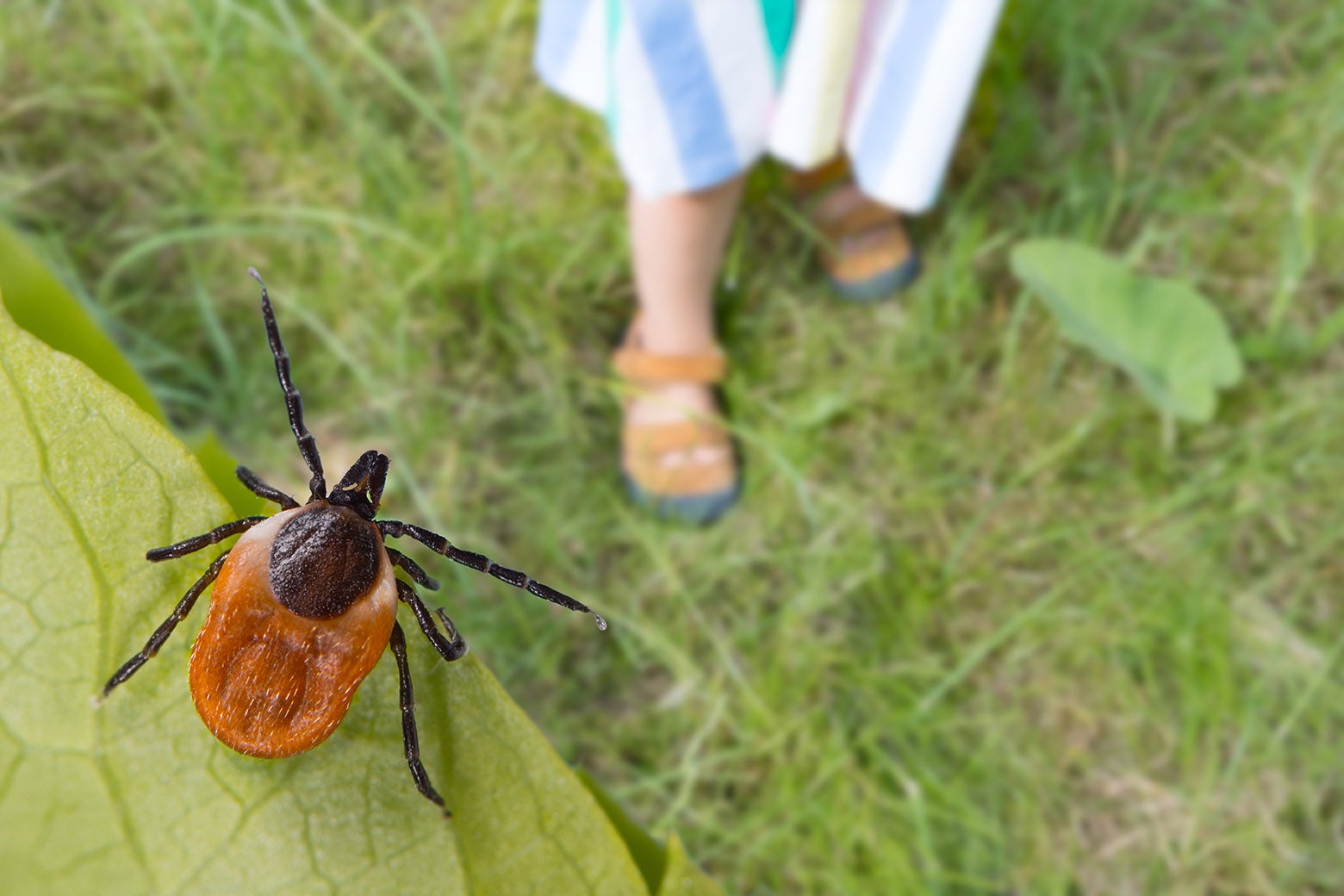Don’t Get Ticked: Tick Bite Prevention
July 10, 2024 Camping, hiking, picnics and barbecues are all hallmarks of summertime. But there can be tiny arachnids lurking about trying to spoil your family fun. Ticks are present year-round, but they’re most active in the warmer months. They’re tiny parasites that feed on the blood of mammals, birds, and sometimes reptiles and amphibians. While there are hundreds of types of ticks, in this area, the two we hear about most often are the deer tick and the dog tick.
Camping, hiking, picnics and barbecues are all hallmarks of summertime. But there can be tiny arachnids lurking about trying to spoil your family fun. Ticks are present year-round, but they’re most active in the warmer months. They’re tiny parasites that feed on the blood of mammals, birds, and sometimes reptiles and amphibians. While there are hundreds of types of ticks, in this area, the two we hear about most often are the deer tick and the dog tick.
Deer ticks are super-small, about the size of a pinhead. They’re found in many parts of the United States and are also known as black-legged ticks. Dog ticks can be up to half an inch long. If you have a dog, you’ve probably found a dog tick on its coat at some point.
Dangers of Tick Bites
Ticks are known for transmitting diseases such as:
- Lyme disease—a bacterial infection spread to people through the bite of deer ticks. It occurs most commonly in the Northeast, mid-Atlantic and upper-Midwest regions.
- Rocky Mountain spotted fever—a bacterial disease spread through the bite of an infected dog tick.
- Anaplasmosis—a disease spread to humans from the bite of a deer tick.
- Babesiosis—primarily spread via deer ticks.
Signs and Symptoms and When to Seek Medical Advice
Many tickborne diseases can have similar signs and symptoms that can range from mild to severe and, in some cases, can be life-threatening. According to the Centers for Disease Control and Prevention (CDC), early detection and treatment are crucial for managing tickborne illnesses.
See your healthcare provider if you get a tick bite and develop the following symptoms within a few weeks:
- Rash: Don’t ignore a red rash around the bite area, especially if it resembles a bull’s-eye (common in Lyme disease).
- Fever and chills: Flu-like symptoms, including fever and chills, may indicate a tickborne illness.
- Aches and pains: Tickborne diseases can cause headache, fatigue and muscle aches. People with Lyme disease may also have joint pain.
- Neurological symptoms: Severe headaches, neck stiffness or facial palsy (loss of muscle tone or droop on one or both sides of the face) warrant immediate medical attention.
- Persistent symptoms: A healthcare professional should evaluate any symptoms that persist or worsen after a tick bite.
Your healthcare provider should evaluate the following before deciding on a plan for treatment:
- Your symptoms
- The geographic region where you were bitten
- Lab tests, depending on the symptoms and the geographic region where you were bitten.
Preventing Tick Bites
Preventing tick bites is the first and best line of defense against tickborne diseases.
Before going outdoors:
- Avoid tick-infested areas: Ticks are commonly found in grassy, wooded and brushy areas. Avoiding these habitats, especially during peak tick season (spring and summer), can reduce your risk of bites.
- Wear protective clothing: When venturing into tick-prone areas, wear long sleeves and long pants, and tuck your pants into your socks to minimize skin exposure.
- Use tick repellents: Apply insect repellents that contain DEET, picaridin or oil of lemon eucalyptus to exposed skin. Treat clothing and gear with products containing 0.5% permethrin.
After being outside:
- Perform tick checks: After spending time outdoors, conduct thorough tick checks on your gear and clothing, as well as on yourself, your children, and your pets. Pay special attention to areas like armpits, groin, around the waist and inside the belly button, back of the knees, scalp, and behind the ears.
- Shower: Showering within two hours of being outdoors can help wash off unattached ticks and make it easier to find any that are attached.
How to Find a Tick
Ticks are small and can be difficult to spot, especially in the early stages of their life cycle. Here’s how to find them:
- Conduct a full-body check: Use a mirror to examine all parts of your body. Ticks can attach anywhere but prefer warm, moist areas.
- Check your pets: Ticks can latch onto pets and then transfer to humans. Regularly check your pets, especially if they spend time outdoors.
- Examine gear and clothing: Ticks can hitch a ride on clothing and gear. Check and wash your clothes after returning from tick-prone areas.
How to Remove a Tick
If you find a tick attached to your skin, remove it as soon as possible. Follow these steps:
- Use fine-tipped tweezers: Grasp the tick as close to the surface of your skin as possible.
- Pull upward with steady pressure: Avoid twisting or jerking the tick, as this can cause the mouthparts to break off and remain in your skin.
- Clean the bite area: After removing the tick, clean the bite area and your hands with rubbing alcohol, an iodine scrub, or soap and water.
- Dispose of the tick: Submerge the tick in alcohol, place it in a sealed bag or flush it down the toilet. Do not crush it with your fingers.
Infectious Disease specialists at Garnet Health can help identify and treat a tickborne illness. Should you experience any unusual symptoms after a tick bite, you can contact a specialist near you by visiting garnethealth.org/services/infectious-diseases. Or, to make an appointment with an infectious disease specialist in Orange County call 845-333-7575 and in Sullivan County call 845-333-8909.
